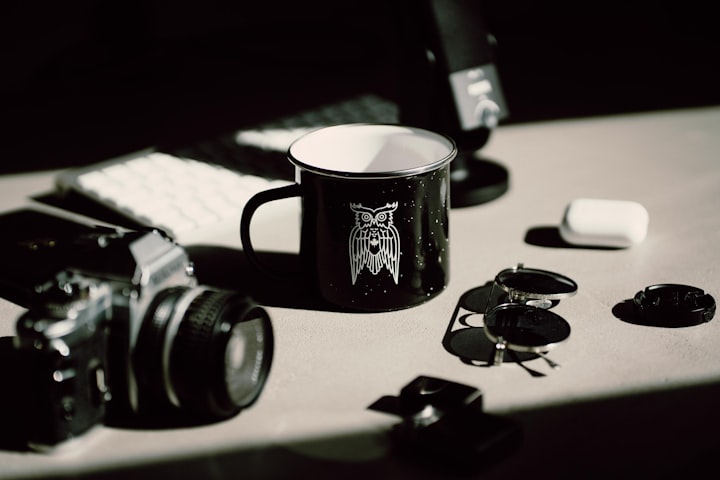Seven Things You Should Learn First In Photography
Photography is a massive subject that can, and does, take years to master. So, like most things in life, you should start from the beginning and learn slowly. But where is the beginning? What should be your first steps into the wonderful world of photography? This article will help you map out your journey step by step and learn it much more thoroughly in order to get the most out of your experience.
Holding your camera
Holding your camera is a skill. It takes time to develop the skill, and it is not something that you can learn overnight. The first thing to do if you want to hold your camera properly is to find a tripod or a place where you can place it so that it doesn’t move. This will help you focus on the framing of the shot and not worry about keeping the camera still. Find what works for you, but keep in mind that there are some universal rules for holding your camera.
Keep both hands on the grip of the camera.
Keep both elbows tucked in close to your body.
Hold the weight of the camera with one hand and use your other hand for fine adjustments.
Keep your knees slightly bent. Always hold your camera with both hands.
Be careful not to cover the lens with your palm or fingers.
Know Your Camera
Before you embark on your photography journey and start learning the complexity of taking professional-standard photographs, learn how to use your camera first. Read the instructions from beginning to end and watch a Youtube video based on your camera make and model. This may seem obvious, but you would be surprised at how many people do not do this.
A camera has a lot of features, and not all cameras are the same. If you don’t want to read anything, look for an instructional video or ask someone who is more experienced than you for assistance.
Aperture Priority And Shutter Priority Modes.
Aperture Priority and Shutter Priority modes are the two most popular modes for photographers. The difference between these two modes is that Aperture Priority mode is used to control the depth of field in a photo, while Shutter Priority mode is used to control how long the shutter stays open in order to capture motion.
The aperture priority setting allows you to adjust how much light enters your camera lens by adjusting the aperture size. A wide-open aperture (small f-number) will allow more light into your camera than a closed one (large f-number). If you need to take photos with a shallow depth of field, then you should use this setting.
The shutter priority setting allows you to adjust how long your camera’s shutter stays open when taking a photo. If you need photos to be in dark or bright light, you can use the shutter priority setting to make sure the photo is taken in a way that the foreground and background are not too dark or bright.
Most cameras have an auto-shutter priority setting. This type of mode adjusts how long your camera’s shutter stays open when taking a photo depending on what it thinks is best for the photo.
Make an effort to comprehend the Exposure Triangle.
Everybody has a hard time understanding the exposure triangle when they first start out. My advice is to watch a Youtube video that explains it in more detail.
Understanding the Exposure Triangle is important for photographers to take the best photos possible. The Exposure Triangle is composed of three sides: ISO, Aperture, and Shutter Speed.
ISO refers to how sensitive your camera sensor is to light. The higher the ISO number, the more sensitive your camera sensor will be, and so you will need less light in order to take a good photo.
Aperture refers to how wide open your lens is when taking a photo. The wider the aperture, the more light that will come into your camera, and so you will need less time for shutter speed in order to take a good photo.
Shutter speed refers to how long you hold down on your shutter button before releasing it and taking a photo. The longer you hold down on your shutter button, the wider your aperture will be, and so you will need more time for shutter speed in order to take a good photo.
The Rule Of Thirds
The rule of thirds is a compositional rule that states that an image should be divided into nine equal parts by two equally-spaced horizontal lines and two equally-spaced vertical lines, and those important compositional elements should be placed along these lines or their intersections. The idea is to place the most important areas of the image along these lines and the less important areas above or below. The human eye naturally follows these lines when looking at images. or landscapes.
The rule of thirds is not a creative rule; it is a compositional rule that can be applied to make the most of an image by placing important compositional elements at the intersections of these lines or parallel to them. The two horizontal and two vertical lines are drawn as straight, imaginary, straight “walls” in order to divide an image into equal thirds. The rule of thirds is essentially a way to determine the most important areas and most important compositional elements in an image.
Photographic Background
Backgrounds in photography are important because they set the tone and mood for the photo. The background can be as simple as a white wall or as complex as an entire scene with people, animals, and objects. The background can also be natural or artificial.
It is important to consider what you want to convey with your photo before choosing a background. In photography, a backdrop can be used to create a separate space in which to set the subject. Typically, this is done with a white or light-coloured wall. It is important for the photographer to make sure that the background does not distract from the focal point of his or her work. The background in a photograph can be natural or artificial.
Understanding Light
Light is the most important element in photography. It is what creates the mood, and the atmosphere, and makes a photo memorable. The photographer has to understand how light works in order to use it in a way that benefits the photo. They should know how different light sources will affect their subject, and they should be able to control it to create a desired mood or atmosphere. Here are some tips on understanding light in photography.
Understand how different types of light sources affect your subject.
Be aware of when natural light will be at its best (morning, evening).
The effects of artificial light are easy to predict and can be used for dramatic effects.
Natural light is the most flattering for portraits. When natural light is not available, you can use an artificial light source to create a similar effect. It works best in the morning and evening hours when there are fewer shadows from buildings or other obstructions.
Be aware of backlight: When the sun is behind you, it may create a harsh light on your subject. Consider what would happen if you were in front of a window with the sun behind you.
Understand how various types of natural light affect each subject’s characteristics. Know what type of light will make someone appear more attractive.
Conclusion
As that old saying goes, a skill that’s worth having is always difficult to achieve. Photography is a discipline in which you are a life-long student because we never stop learning, which is what distinguishes photography.
Remember to have fun. Photography is a form of well-being and if you are stressed then you are doing it wrong.
About the Creator
David Burrows
I am a freelance photographer and I also write blogs. I love to share my knowledge and passion for photography with others. I have been a photography blogger for the last year. I write about travel, people, nature, and photography advice.







Comments
There are no comments for this story
Be the first to respond and start the conversation.